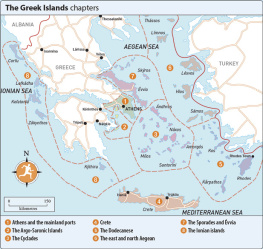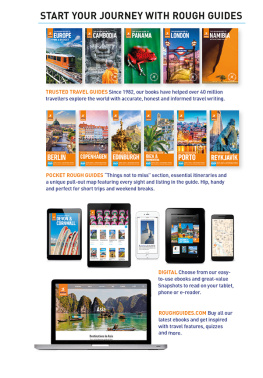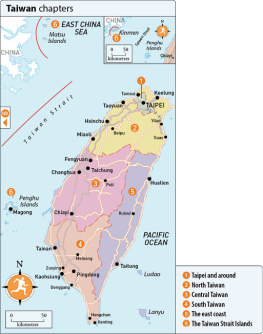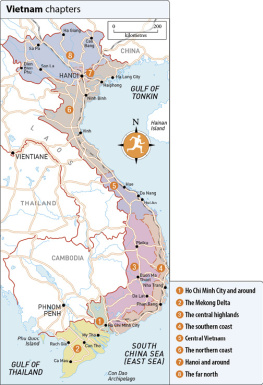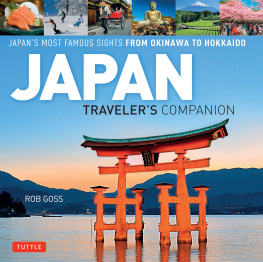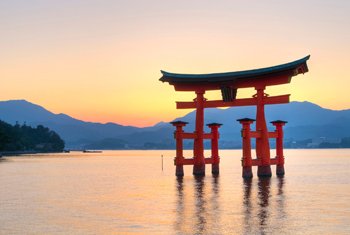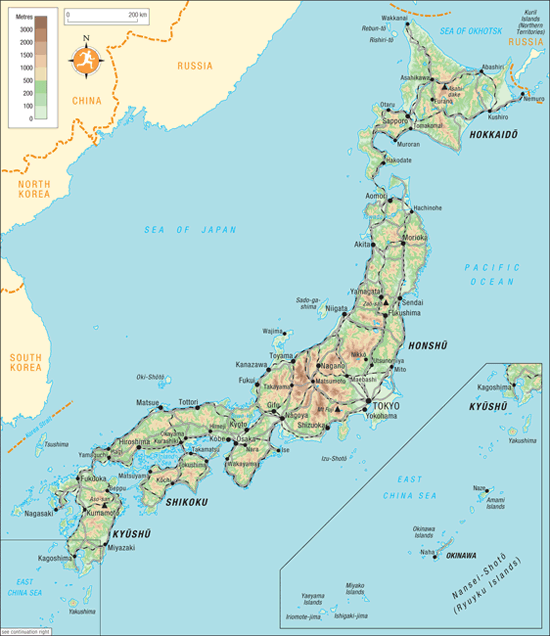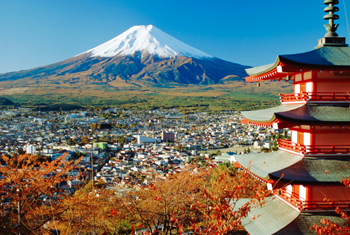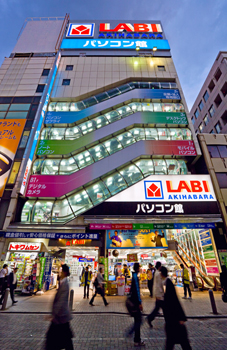
Commuters in Akihabara, Tokyo
Anyone whos ever eaten sushi, read manga, or sipped sake may feel they know something about this slinky archipelago of some 6800 volcanic islands. And yet, from the moment of arrival in Japan, its almost as if youve touched down on another planet. Prepare to be pleasantly disorientated as you negotiate this fascinating land where ancient gods, customs and craftsmanship are mixed up with cutting edge modern technology, futuristic fashions and up-to-the-second style.
High-speed trains whisk you from one end of the country to another with awe-inspiring punctuality. In the suburbs of a sprawling metropolis, you can catch sight of a farmer tending his paddy field, then turn the corner and find yourself next to a neon-festooned (video) games parlour. One day you could be picking through fashions in a boutique designed by an award-winning architect, the next relaxing in an outdoor hot-spring pool, watching cherry blossom or snowflakes fall, depending on the season.
Few other countries have, in the space of a few generations, experienced so much or made such an impact. Industrialized at lightning speed in the late nineteenth century, Japan shed its feudal trappings to become the most powerful and outwardly aggressive country in Asia in a matter of decades. After defeat in World War II, it transformed itself from atom-bomb victim to economic giant, the envy of the world. Having weathered a decade-long recession from the mid-1990s, Japan is now relishing its soft power as the worlds pre-eminent purveyor of pop culture, with the visual mediums of anime and manga leading the way.
In the cities youll first be struck by the mass of people. These hyperactive metropolises are the place to catch the latest trend, the hippest fashions and must-have gadgets before they hit the rest of the world. Its not all about modernity, however: Tokyo, Kyoto, saka and Kanazawa, for example, also provide the best opportunities to view traditional performance arts, such as kabuki and n plays, as well as a wealth of Japanese visual arts in major museums. Outside the cities theres a vast range of travel options, from the UNESCO World Heritage-listed Shiretoko National Park in Hokkaid to the balmy subtropical islands of Okinawa, and youll seldom have to go far to catch sight of a lofty castle, ancient temple or shrine, or locals celebrating at a colourful street festival.
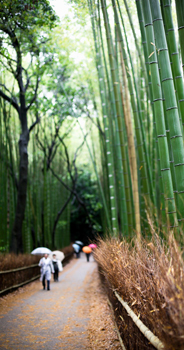
Bamboo forest, Kyoto
In common with all developed countries, Japan is not a cheap place to travel in or to, but theres no reason why it should be wildly expensive either. Some of the most atmospheric and traditionally Japanese places to stay and eat are often those that are the best value. Theres been significant price-cutting in some areas in recent years, particularly airline tickets, which now rival the famed bargain rail passes as a means to get to far-flung corners of the country.
Its not all perfect, however. The Japanese are experts at focusing on detail (the exquisite wrapping of gifts and the tantalizing presentation of food are just two examples) but often miss the broader picture. Rampant development and sometimes appalling pollution are difficult to square with a country also renowned for cleanliness and appreciation of nature. Part of the problem is that natural cataclysms, such as earthquakes and typhoons, regularly hit Japan, so few people expect things to last for long anyway. Theres no denying either the pernicious impact of mass tourism, with ranks of gift shops, ugly hotels and crowds often ruining potentially idyllic spots.
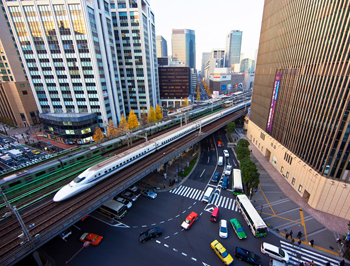
Shinkansen streaking through downtown Tokyo
And yet, time and again, Japan redeems itself with unexpectedly beautiful landscapes, charmingly courteous people, and its tangible sense of history and cherished traditions. Few will be able to resist the chance to get to grips with its mysterious yet tantalising culture that blurs the traditional boundaries between East and West Japan is unique, neither wholly one nor the other.
Fact file
Japan is made up of around 6800 islands, the main five being (in descending order of size) Honsh, Hokkaid, Kysh, Shikoku and Okinawa. Travelling from Sya Misaki, Japans northernmost point, to Hateruma-jima, the southernmost island in Okinawa, youll cover over 3000km.
Despite many Japanese telling you what a small country they live in, Japan is in fact twice the size of the UK. This sense of smallness lays in the fact that much of the country is covered by densely forested mountains; some 127.5 million people are thus squished into the flat quarter of Japans land surface, making the southern coastal plain of Honsh from Tokyo down to saka one of the most densely populated areas in the world.
Among this population Japanese predominate, making this one of the worlds most ethnically homogeneous societies. The most significant non-Japanese group living in the country are Koreans, numbering around 900,000. Indigenous people such as the Ainu account for no more than 100,000 people. Japan is also a rapidly ageing society, with a very low birth rate and long life expectancy.
Though not the economic powerhouse it once was, Japans economy is the third largest in the world after that of the US and China. Manufacture of electronics, machine tools and automobiles continue to be the main industries. Price deflation has been persistent for the past two decades as the nation has staggered from one economic crisis to another.



